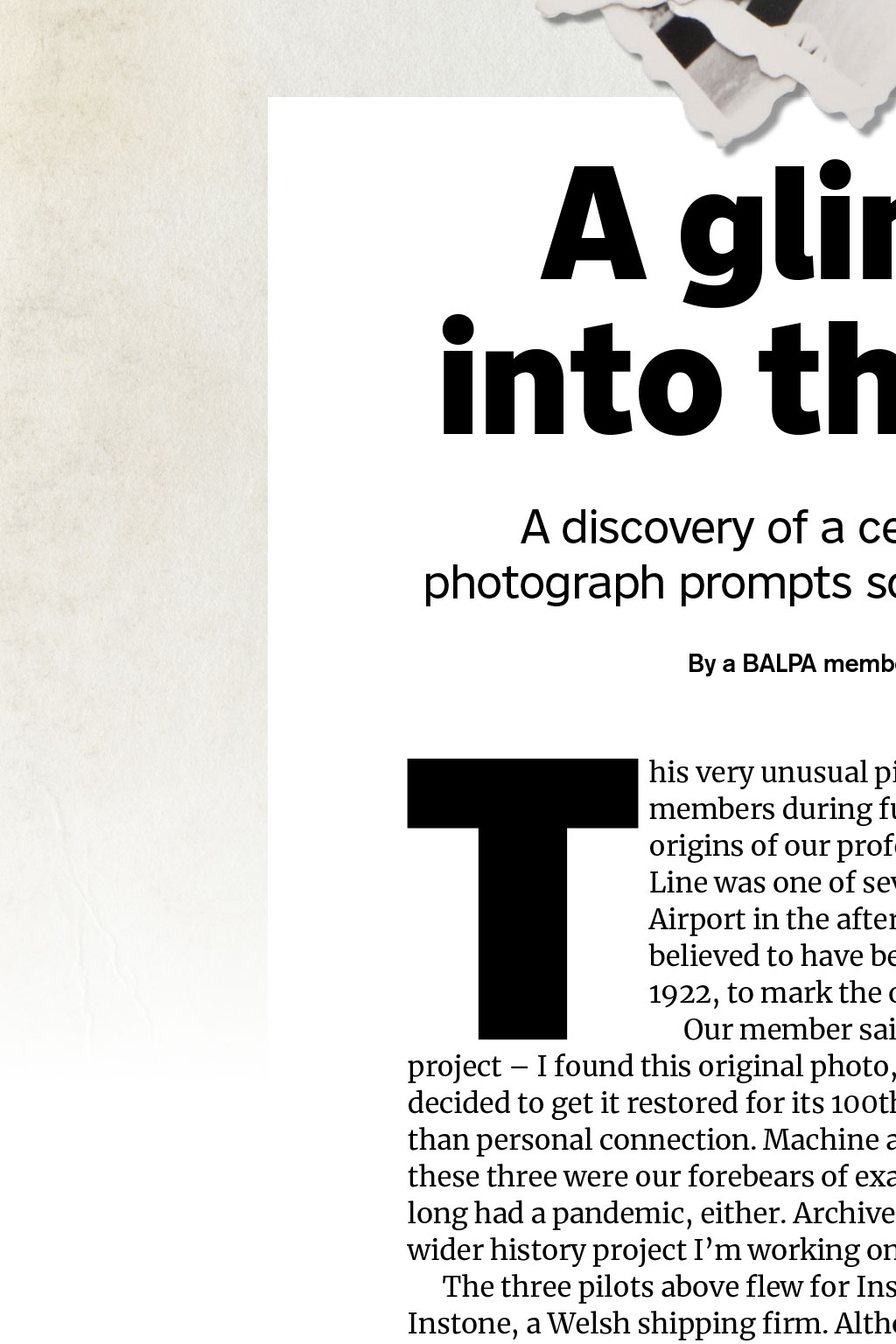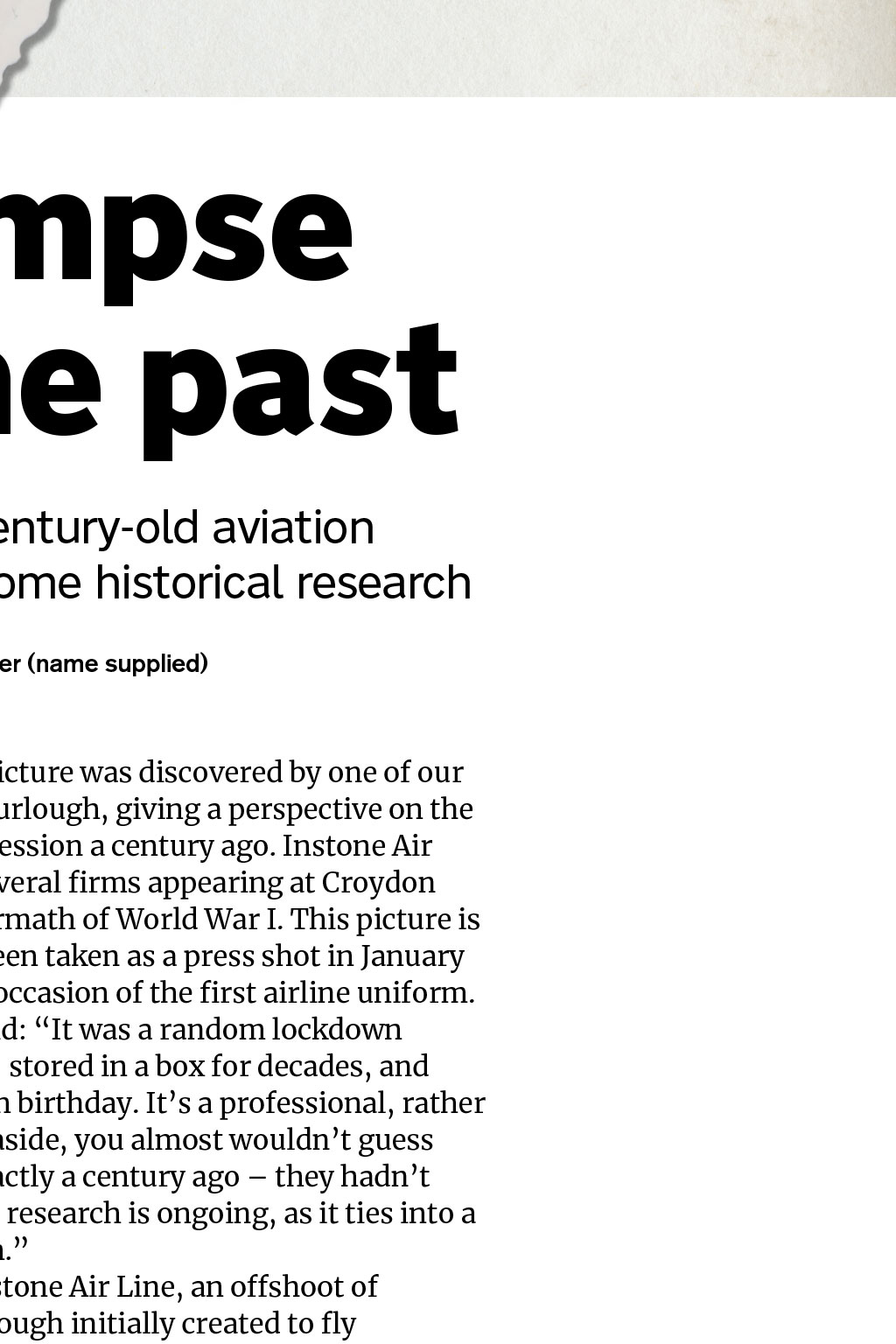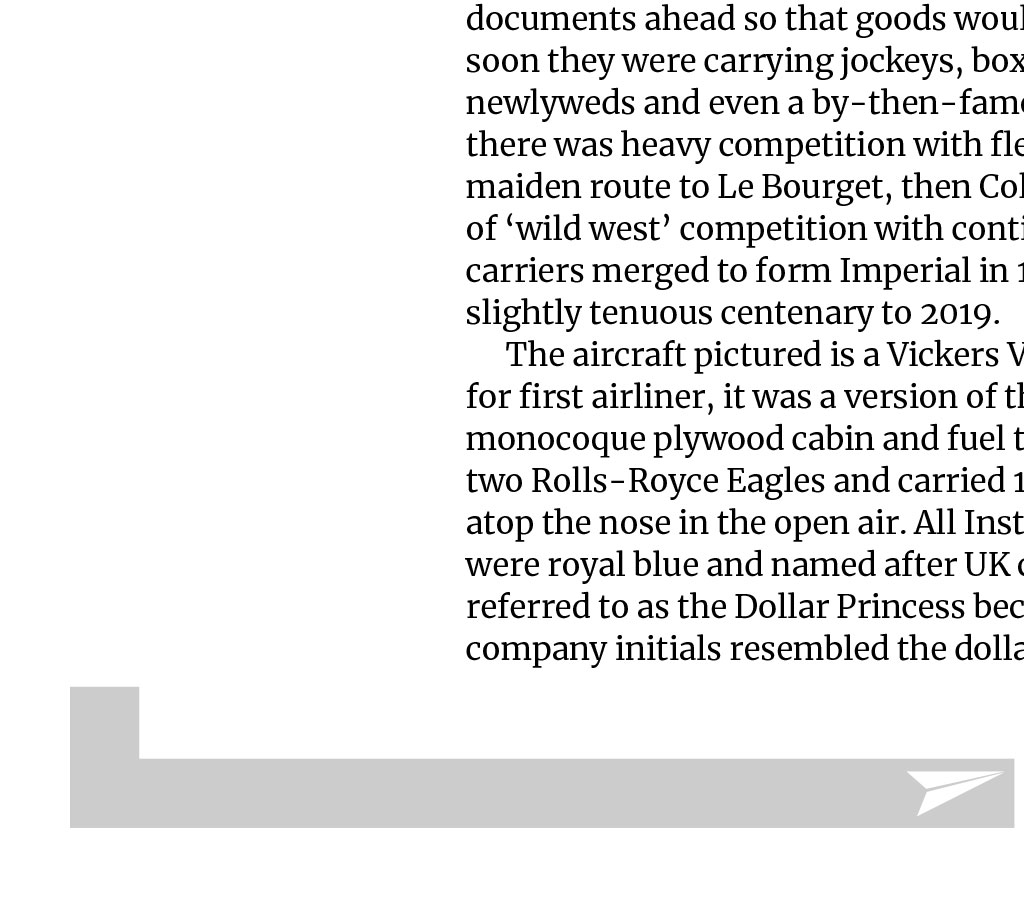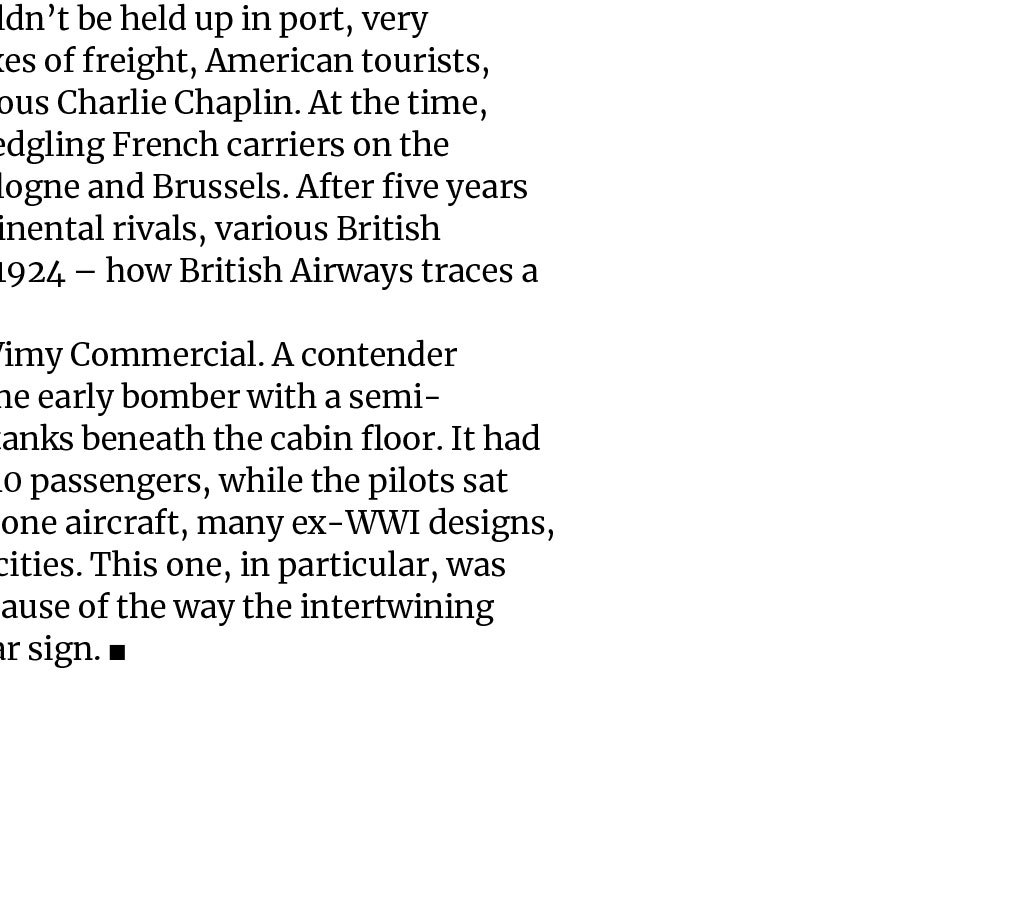












HISTORICAL A discovery of a century-old aviation photograph prompts some historical research By a BALPA member (name supplied) his very unusual picture was discovered by one of our members during furlough, giving a perspective on the origins of our profession a century ago. Instone Air Line was one of several firms appearing at Croydon Airport in the aftermath of World War I. This picture is believed to have been taken as a press shot in January 1922, to mark the occasion of the first airline uniform. Our member said: It was a random lockdown project I found this original photo, stored in a box for decades, and decided to get it restored for its 100th birthday. Its a professional, rather than personal connection. Machine aside, you almost wouldnt guess these three were our forebears of exactly a century ago they hadnt long had a pandemic, either. Archive research is ongoing, as it ties into a wider history project Im working on. The three pilots above flew for Instone Air Line, an offshoot of Instone, a Welsh shipping firm. Although initially created to fly documents ahead so that goods wouldnt be held up in port, very soon they were carrying jockeys, boxes of freight, American tourists, newlyweds and even a by-then-famous Charlie Chaplin. At the time, there was heavy competition with fledgling French carriers on the maiden route to Le Bourget, then Cologne and Brussels. After five years of wild west competition with continental rivals, various British carriers merged to form Imperial in 1924 how British Airways traces a slightly tenuous centenary to 2019. The aircraft pictured is a Vickers Vimy Commercial. A contender for first airliner, it was a version of the early bomber with a semimonocoque plywood cabin and fuel tanks beneath the cabin floor. It had two Rolls-Royce Eagles and carried 10 passengers, while the pilots sat atop the nose in the open air. All Instone aircraft, many ex-WWI designs, were royal blue and named after UK cities. This one, in particular, was referred to as the Dollar Princess because of the way the intertwining company initials resembled the dollar sign.